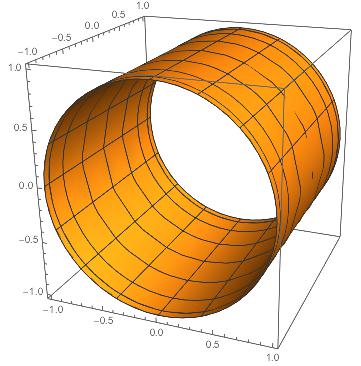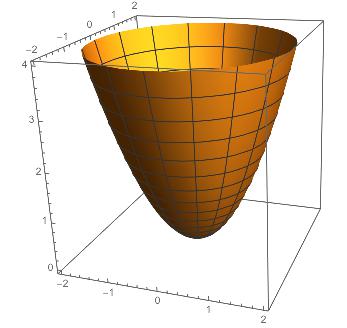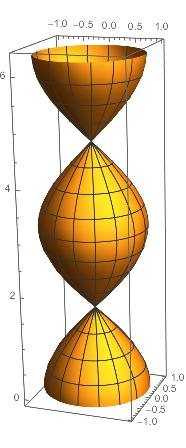Objectives:
- 1.
- Know what it means to parametrize a surface.
- 2.
- Understand why surface parametrizations always have two variables.
- 3.
- Be able to parametrize various surfaces.
- 4.
- Understand how to find the tangent plane to a parametrized surface.
- 5.
- Know how to calculate the surface area of a parametrized surface.
Recap Video
Here is a video highlights the main points of the section.
_
To summarize:
- A parametrization of a surface consists of a description of the points of the surface as a function of two variables, say , where live in some domain .
- If a surface is parametrized as , then the partials and are computed componentwise and give tangent vectors to , and their cross product gives the normal vector to the tangent plane.
- The surface area of a surface given by , where are in some domain , is given by
Problems
Parametrizing Surfaces
Use the spherical coordinate method demonstrated in class to parametrize
the portion of the sphere which lies in the first octant. (INPUT NOTE: In
your answer, write p instead of phi. For example, write instead of .)
The surface with parametrization
for and can be gotten by revolving the graph of for around the xyz
-axis.
Let be the portion of the graph of where .
- A parametrization for in Cartesian coordinates could be for .
- A parametrization for using polar coordinates in and would be for and .



